Rodea the Sky Soldier (Nintendo 3DS) Review
By Rudy Lavaux  09.12.2015
09.12.2015
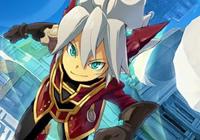
Some games go by so many states throughout their development that it's not always easy to make sense of how a game came to being on store shelves from the initial planning stages to the final product. Yuji Naka, famous for creating Sonic The Hedgehog, a true icon of gaming in the 1990s and well into the 2000s, left Sega in 2006 with part of Sonic Team to pursue new ventures and gain more freedom to create more original experiences. He worked on many projects at his studio, Prope, primarily for iOS and Android, but did develop a few noteworthy titles for Nintendo platforms. Among those are Let's Tap, famous for coming with a piece of cardboard to rest the Wii Remote on and tap on, and Ivy the Kiwi?, a puzzle game for both the Wii and DS. Both were highly praised at Cubed3, giving credit to the undeniable talent of the studio for creating interesting new experiences, but the man behind those was still best known as the creator of Sonic and Nights into Dreams. Enter Rodea the Sky Soldier, a promising prospect alluded to by Yuji Naka in a 2010 interview as a pet project that draws heavily from both his aforementioned Sega masterpieces. The game was announced as being complete for the Wii platform and 70% complete for the newly announced 3DS in 2011, yet years went on and nothing came out of this. 2015 is coming to a close, and finally, the game is released on Wii U and 3DS, with the Wii version last seen in limbo only being included with pre-ordered physical copies of the Wii U version. Games that go through such troubles getting into the hands of gamers are not known to always turn out well, but it's with a fresh mindset that Cubed3 approaches this long-awaited production from one of the biggest game creators of all time.
Rodea is a robot created to serve the earthbound empire of Naga. He is first seen at the service of their princess, Cecilia. The Naga empire is looking to steal an immense power source being possessed by the airborne kingdom of Garuda, which flies over the empire of Naga once every 1000 years. Rodea, however, serves only the princess, who looks to prevent her own empire from obtaining such a power source, as it would give the emperor too much freedom to destroy the entire world. During the attack, Rodea is knocked unconscious, only to be reawakened a millennium later, found by a resident of the Garuda kingdom just as it is about to fly over the Naga empire for the first time since the last attack - though its inhabitants have not forgotten how evil the Naga empire is. Rodea, who can only remember being asked by the princess to not let the Empire get their hands on the power source, sets out to protect Garuda from the very people who created him. The prologue serves as an introduction to the gameplay, as Rodea himself explains how he is controlled using the circle pad and buttons.
This is unfortunately where the biggest and probably only major problem rises up. Rodea moves around on the ground by using the circle pad, which doesn't feel exactly stellar due to bad camera management - something that most 3D games developed by Sonic Team (or in this case, developed by people who used to be a part thereof) seem to suffer from. The game was not initially designed to be played with a circle pad, or even a joystick, for that matter. It was designed to be played with the Wii Remote. In the original Wii version, the Remote would be held vertically, which felt even more awkward, so in this sense, the port performs a little bit better, but this is not the meat of the game. The meat of the game is flight.
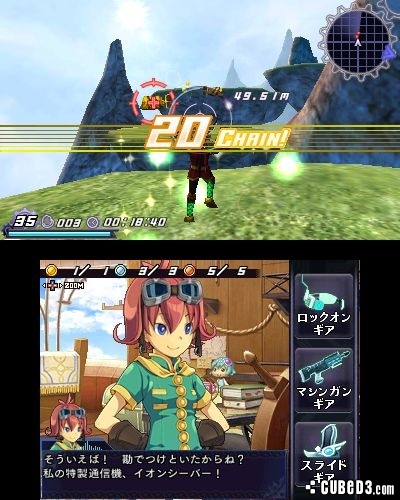
Rodea will only seldom be walking on foot, considering the kingdom of Garuda is made up of lots of small flying islands, and flying is just faster. The whole game is built around it, so if there's a problem with it, it's a safe bet to assume that it will stick out pretty sorely, and unfortunately, this is the case. At the press of a button, Rodea goes into flight mode and a reticle appears on screen, moveable by using, again, the circle pad. Pointing the reticle at any piece of scenery and pressing a button will make Rodea fly there automatically, at a decent speed. If the direction the player wants to go is outside the boundaries of the screen, the camera can be panned to the left or right using the shoulder buttons, but it moves by set amounts, Super Mario 64 style, and sometimes makes it impossible to get a good view of things. Slowly moving the reticle around the screen is what feels the most uncomfortable. On the Wii, this is quickly done by pointing directly at the screen, using the IR sensor on the Wii remote, and panning the camera happens naturally when the reticle reaches the sides of the screen. Playing the Wii version and the 3DS one (or the Wii U one which controls the same for that matter) side by side, it's easy to see that the game was simply ported over in the quickest and dirtiest way, pasting over a mechanic designed and well thought-out to be relevant with pointer controls to a system that doesn't support such hardware.
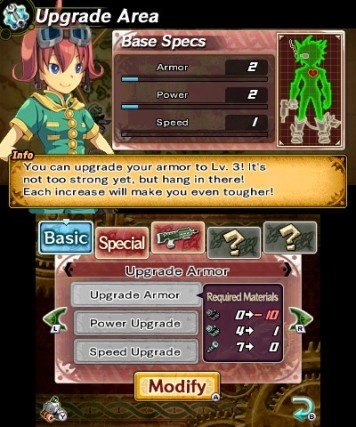
Perhaps cooking up something involving the touch screen and stylus, in the style of the excellent control scheme found in the classic Metroid Prime Hunters or even the more recent but more controversial Kid Icarus: Uprising might have made for a better control scheme, but that, unfortunately, wasn't the case here. It has to be said, however, that the 3DS and Wii U versions were not developed by Prope directly, and it's unknown how much of an input Yuji Naka had on these two versions developed by Kadokawa Games, so it might be unfair to pin the responsibility for problems of playability on Sonic's creator. Whatever the case is, Yuji Naka himself recommended people skip over the 3DS and Wii U versions in favour of the Wii version in a very honest tweet, the very day that the game came out in North America, so it sounds like the man disowned the versions on the market.
It's a sad state of affairs that the game's original designer could not recognise his original vision in the final product, and after playing the originally intended release completed years ago, as well as the newer ones, it's easy to see why he couldn't. Most of the game's other qualities are still very much present: a good story (like Yuji Naka has always been great at cooking up), and pleasant character designs. Visually, the 3DS version, like the Wii U one, looks quite a bit darker in tone than the original, and as can be expected, it also looks worse. Character models seem to have less polygons, textures are a lot more blurry than even the Wii version, aliasing is bad with or without 3D on, and the frame rate performance is pretty bad. The 3D effect, which could have been the edge that this version would have on the others, doesn't do much to make the game more enjoyable.
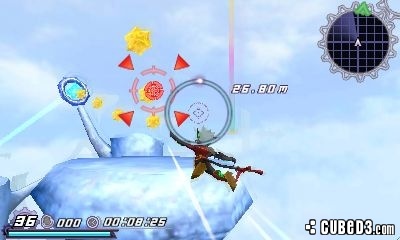
The campaign is structured in rather long levels, each containing lots of collectables to be found, and those levels are aplenty, so it offers a lot to see and do. The amount of objects collected, the time it took to do so, the amount of health remaining, and so on, all count towards a rank awarded by the game in the style of Sonic Adventure 2, so there's something else to extend the game's longevity. The problem is that despite being on the 3DS, the game doesn't lend itself well to being played in short sessions, given the lack of a quick saving system or permanent checkpoints placed within the levels themselves. In addition to all this, Rodea, as a robot, can be upgraded by purchasing better parts using an in-game currency that can be found within levels, giving the game a light RPG vibe that is not unpleasant, even if it was apparently not found in the original game.
The sound is definitely the best part of the game. The soundtrack is excellent, sound effects are as pleasant as could be expected in a game Yuji Naka worked on, and both Japanese and English voices are supported in all versions released. The former option is always nice to have, however, during gameplay, when a side character addresses Rodea as he fights enemies, it's nice to be able to understand what is said without having to read subtitles that would distract from the action that continues to play out during those conversations. The English dub isn't the worst out there by a long shot, so for the sake of being able to play the game comfortably, those whose skills with the Japanese language are lacking should do better to stick with the English dub throughout. Those who understand neither, however, will definitely miss out, just as was the case in Kid Icarus: Uprising.
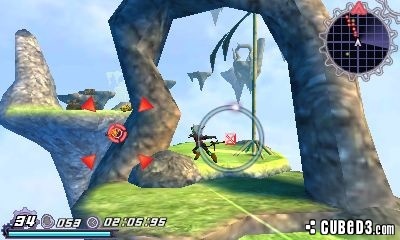
Cubed3 Rating
Average
With a good story, charming characters, and an original play concept that feels good, Rodea the Sky Soldier is simply a lovingly crafted game that found itself put on a platform that was not suited to welcome it. Visually unimpressive on the 3DS, even if no one knew that the concept was first imagined with the Wii Remote pointer controls in mind, they would still think it would play much better on one of Nintendo's home consoles. Unfortunately, even the Wii U version doesn't support the Wii Remote anymore, while the elusive Wii version remains the true original vision of the artist that plays infinitely better and, some would argue, looks better too, with its brighter visuals. What remains on 3DS is still very much a good and enjoyable experience for sure, granted that the user manages to get used to the cumbersome control scheme. Nevertheless, it still conveys lots of charm, and sounds truly amazing. The final product just falls a bit short compared to what could have been. The concept of flying and attacking by pointing at locations is a great one, but the execution of the basic mechanic through the circle pad, or an analogue stick for that matter, just doesn't feel quite as good. Rodea the Sky Soldier is simply full of good intentions, a masterpiece stuck in limbo and shown through a sort of slightly distorted mirror - still showing a good image, but impossible to see the way it was meant to be seen by its creator, on the platforms it ended up on. If the creator himself recommends tracking down the Wii version while possible, it becomes hard to recommend, except for those who absolutely can't get access to the original game at all.
Comments
Comments are currently disabled

 Sign In
Sign In Game Details
Game Details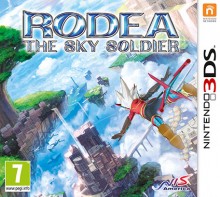
 Out now
Out now  Out now
Out now  2015
2015  Out now
Out now  Subscribe to this topic
Subscribe to this topic Features
Features





 Top
Top

